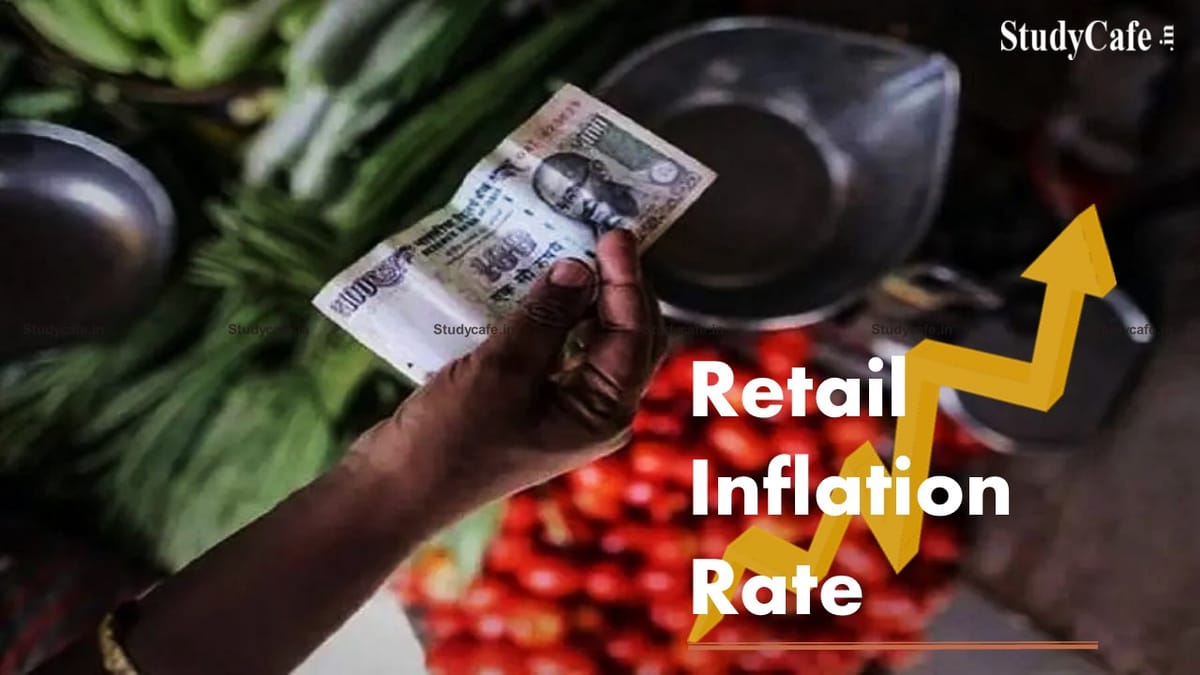Reetu | Jan 31, 2022 |

BUDGET 2022: Retail Inflation Remains Moderate During Current Year; 5.2% in 2021-22 (April-December)
Retail inflation, as measured by the Consumer Price Index-Combined (CPI-C), is expected to moderate to 5.2 percent in 2021-22 (April-December) from 6.6 percent in 2020-21, according to the Economic Survey 2021-22 presented in parliament today by Union Minister for Finance and Corporate Affairs, Smt Nirmala Sitharaman. According to the survey, effective supply-side management kept most important commodity prices under control throughout the year.

The Survey reveals that, in comparison to many other emerging markets and developing economies (EMDEs) and advanced economies, India’s Consumer Price Index – Combined (CPI-C) inflation has remained range bound in recent months, peaking at 5.2 percent in December 2021. This was made feasible in great part by the government’s proactive efforts to improve supply management.
According to the Economic Survey, worldwide inflation rose in 2021 as economies opened up, reviving economic activity. In advanced economies, inflation increased from 0.7 percent in 2020 to about 3.1 percent in 2021. In the United States, for example, inflation reached 7.0 percent in December 2021, the highest level since 1982. In December 2021, it reached an almost 30-year high of 5.4 percent in the United Kingdom. Brazil experienced 10.1 percent inflation in December 2021, while Turkey also experienced double-digit inflation of 36.1 percent. Inflation rates in Argentina have been above 50% for the past six months.
Retail inflation fell to 5.2 percent from 6.6 percent over April to December 2020-21, firmly within the goal range of 2 percent to 6%. According to the survey, this is mostly due to a decrease in food inflation. Food inflation, as measured by the Consumer Food Price Index (CFPI), was at an all-time low of 2.9 percent in 2021-22 (April-December), compared to 9.1 percent the previous year.
According to the survey, a “refined” Core inflation rate has been calculated to eliminate volatile fuel items. In addition to “food and beverages” and “fuel and light,” “petrol for vehicle” and “diesel for vehicle” and “lubricants & other fuels for vehicles” have been excluded from headline retail inflation. Refined core inflation has been much lower than conventional core inflation since June 2020, demonstrating the impact of fuel inflation on the “conventional” core inflation gauge.
The “miscellaneous” and “fuel & light” groups have been major drivers of retail inflation. Miscellaneous contributions rose to 35 percent in 2021-22 (April – December) from 26.8% in 2020-21 (April – December). According to the survey, the subdivision “transport and communication” contributed the most to the miscellaneous group, followed by “health.” Food and beverage contributions, on the other hand, fell from 59 percent to 31.9 percent.
The Survey mentions that Inflation in the above two groups for the period of 2021-22 (April – December) has been largely due to the high international crude oil, petroleum product prices and higher taxes.
The Survey expresses that apart from transport & communication; “clothing and footwear” inflation also saw a rising trend during the current financial year possibly indicating higher production and input costs (including imported inputs) as well as due to revival of consumer demand.
Despite having a weight of only 7.8% in the category, “oils and fats” contributed nearly 60% of “food and beverage” inflation, according to the survey. The demand for edible oils is mostly satisfied by imports (60 percent), and the significant inflation in this subgroup is due to variations in international pricing. Though India’s edible oil imports were at their lowest level in six years, their value climbed by 63.5 percent in 2020-21 compared to 2019-20.
Pulse inflation fell to 2.4 percent in December 2021 from 16.4 percent in 2020-21, according to the survey.
Pulses inflation is on the decline, with the area seeded for kharif pulses reaching a new high of 142.4 lakh hectare (as of 1st October 2021).
The Survey notes that the gap between rural and urban CPI inflation declined in 2020 as compared to the higher gaps witnessed from July 2018 to December 2019. The factor largely responsible for divergence, for brief time periods, is the component of food and beverages.
WPI inflation has shown an increasing trend and has remained high during the current financial year touching 12.5% during 2021-22 (April – December). The Survey describes that part of the high inflation could be because of a low base in the previous year as WPI inflation has been benign during 2020-21.
The Survey observes that Crude petroleum & natural gas sub group under WPI has witnessed very high inflation and stood at 55.7% in December 2021. Within manufactured food products, edible oils were a major contributor.

The survey blames a variety of variables for the disparity between the two indices. Variations due to base effect, conceptual differences in their purpose and design, price behaviour of the different components of the two indices, and trailing demand pick up are only a few of them. According to the survey, as the base impact in WPI fades, the gap between WPI and CPI inflation is likely to reduce.

The Survey states that given the importance of supply side factors in having a predominance in determination of inflation in India, certain long term policies are likely to help. This includes changing production patterns which would lead to diversification of production of crops, calibrated import policy to address uncertainty and increased focus on transportation and storage infrastructure for perishable commodities.
In case of any Doubt regarding Membership you can mail us at contact@studycafe.in
Join Studycafe's WhatsApp Group or Telegram Channel for Latest Updates on Government Job, Sarkari Naukri, Private Jobs, Income Tax, GST, Companies Act, Judgements and CA, CS, ICWA, and MUCH MORE!"